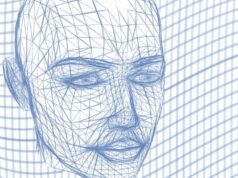
Uncovering and abolishing focal ventricular tachycardia (VT) may further improve outcomes of catheter ablation in the treatment of structural heart disease, a study published in the Journal of the American College of Cardiology (JACC): Clinical Electrophysiology concludes. Robert Anderson (Westmead Hospital, Sydney and Royal Melbourne Hospital, Melbourne, Australia) who lead the study, notes that focal ventricular tachycardias are common in patients with structural heart disease (SHD) and often coexist with re-entrant forms of ventricular tachycardia.
Through the paper, Anderson and colleagues sought to summarise the frequency, procedural characteristics and clinical outcomes in patients with structural heart disease, shown to have a focal mechanism, despite the presence of scar and the typical electrophysiological milieu for re-entrant VT. Focal VT is typically seen in patients without structural heart disease, and is rarely seen as a dominant mechanism in patients with established or acute ischaemic heart disease, the study team noted.
Patients with structural heart disease undergoing VT ablation procedures at a single-centre—the Department of Electrophysiology at Westmead Hospital (Sydney, Australia)—over a two-year period, were considered eligible for inclusion in the study. Pre-procedural data, arrhythmia history, procedural characteristics, complications and follow-up were collected from 145 patients who underwent catheter ablation for ventricular arrhythmia, during the study period. Of the cohort, 116 had structural heart disease and 112 had inducible VT and underwent a detailed induction protocol to expose a focal VT mechanism. The extended induction protocol incorporated programmed electrical stimulation, right ventricular burst pacing and isoprenaline to elucidate both re-entrant and focal VT mechanisms.
The study team found that 18 of the group of 112 patients (16%) undergoing VT ablation had a focal VT mechanism (mean age 66±13 years; ejection fraction 46±14%; non-ischaemic cardiomyopathy 10). Repetitive failure of termination with antitachycardia pacing (ATP) (69% of patients) or defibrillator shocks (56%) were a common feature of focal VTs, they suggest. A median of three VTs per patient were inducible (28 focal VTs, 34 re-entrant VTs; 53% of patients had both focal and re-entrant VT mechanism), and focal VTs more commonly originated from the right ventricle than the left ventricle (67% vs. 33%, respectively), results also showed.
In the right ventricle, the study indicates, the outflow tract was the most common site (33% of all focal VTs), followed by the right ventricle moderator band (22%), apical septal right ventricle (6%), and lateral tricuspid annulus (6%). The lateral left ventricle (non-Purkinje) was the most common left ventricle focal VT site (16%), followed by the papillary muscles (17%). On follow-up with patients, after a median period of 289 days, 78% remained arrhythmia-free and no patients had recurrence of focal VT at repeat procedure. In patients with recurrence, defibrillator therapies were significantly reduced from a median of 53 ATP episodes pre-ablation to 10 ATP episodes post-ablation. During follow-up, two patients (11%) underwent repeat VT ablation; and none had recurrence of focal VT.
Anderson and colleagues suggest that in patients with structural heart disease and myocardial scar, focal VTs are commonly revealed (16% of consecutive patients) originating remotely or adjacent to the scar border when a strict protocol of right ventricle burst pacing and catecholamine is used. These sites predominantly show normal bipolar and unipolar voltage, they note, often originating from sites classical for otherwise ‘idiopathic’ forms of VT.
The study also found that focal VTs were common in patients with nonischaemic cardiomyopathy (72% of the 18 structural heart disease patients in this series), which the authors suggest means that standard induction protocols without the use of burst pacing and isoprenaline could miss this VT mechanism. This could help explain high rate of recurrent VT in follow up in these patients, the study team suggest. Additionally they note that when focal VT sources are identified, catheter ablation terminated the VT in all of the cases, with no recurrence in follow up.
Anderson and colleagues suggest that the study demonstrates that an extended induction protocol incorporating right ventricle burst pacing and catecholamine stimulation reveals a group of patients with a focal mechanism. They add: “Targeting and eliminating a focal mechanism of VT in patients with SHD [structural heart disease], particularly if it matches the clinic morphology, may lead to improve outcomes by reducing VT recurrences and prolong arrhythmia-free periods in this group.” And, the prevalence of nonischaemic cardiomyopathy patients in this group, suggests that standard programmed electrical stimulation protocols without burst right ventricle pacing or isoprenaline may miss focal VT sources in such patients.
In conclusion, the study team remark that focal VT is a common, potentially under-recognised mechanism of VT in patients with structural heart disease (totally 16% in this study), and it is often co-existing with re-entrant VTs. Finally, they surmise that establishing whether uncovering focal and re-entrant VT mechanism routinely during ablation procedures will improve outcomes of VT ablation and is worthy of future study.
Commenting to Cardiac Rhythm News on the significance of the findings, Anderson said: “In patients with structural heart disease, repetitive VT initiation despite ICD therapies (failed anti-tachycardia pacing or shocks) may be a relevant finding, suggesting a focal VT mechanism. In a field where a substrate-based ablation is increasingly being performed, this study highlights the importance of systematic and extended induction and when feasible, activation and entrainment mapping, to uncover a focal mechanism. Focal VTs were most commonly remote from scar and a third of focal VTs were found to originate from scar border zone regions. The close proximity to scar raises the possibility of scar being directly arrhythmogenic or may facilitate re-entrant VTs, however, the mechanistic relationship of focal and re-entrant VTs remains unanswered in this study.“









